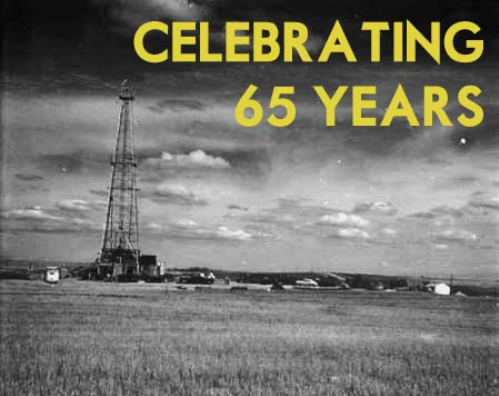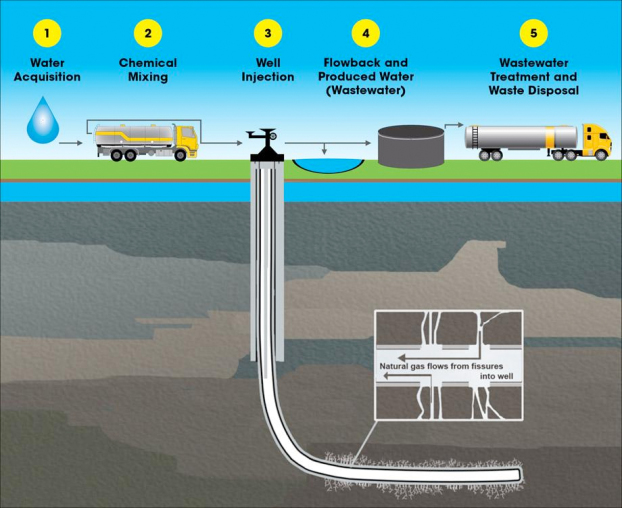INTRODUCTION by Bob van der Valk, Senior Editor | Bakken Oil Business Journal
“In October 2014 crude oil barrels went down 4M barrels/day from 1,186,228 to 1,182,174 barrels/day. The drilling rig count dropped 2 from September to October, an additional 3 from October to November, and has since fallen 5 more from November to today. The number of well completions decreased from 193(final) in September to 134(preliminary) in October. Three significant forces are driving the slow-down: oil price, flaring reduction, and oil conditioning.”
NDIC Department of Mineral Resources Director’s Cut Newsletter
December 13, 2014 – Lynn Helms
Crude Oil production:
Sep Oil 35,586,832 barrels = 1,186,228 barrels/day
Oct Oil 36,647,393 barrels = 1,182,174 barrels/day (preliminary)
1,118,010 barrels per day or 95% from Bakken and Three Forks
64,164 barrels per day or 5% from legacy conventional pools
Natural Gas Production:
Sep Gas 42,400,766 MCF = 1,413,359 MCF/day
Oct Gas 44,317,381 MCF = 1,429,593 MCF/day (preliminary)(NEW all-time high)
Sep Producing Wells = 11,758
Oct Producing Wells = 11,892 (preliminary)(NEW all-time high)
8,406 wells or 71% are now unconventional Bakken – Three forks wells
3,486 wells or 29% produce from legacy conventional pools
Permits issued:
Sep Permitting: 261 drilling and 2 seismic
Oct Permitting: 328 drilling and 1 seismic
Nov Permitting: 235 drilling and 1 seismic (all time high was 370 in 10/2012)
Crude oil pricing:
Sep Sweet Crude Price = $74.85/barrel
Oct Sweet Crude Price = $68.94/barrel
Nov Sweet Crude Price = $60.61/barrel
Today Sweet Crude Price = $41.75/barrel (lowest since March 2009) (all-time high was $136.29 7/3/2008)
Rig Count:
Sep rig count 193
Oct rig count 191
Nov rig count 188
Today’s rig count is 183 (all-time high was 218 on 5/29/2012)
The statewide rig count is down 16% from the high and in the five most active counties rig count is down as follows:
Divide -69% (high was 3/2013)
Dunn -26% (high was 6/2012)
McKenzie -15% (high was 1/2014)
Mountrail -20% (high was 6/2011)
Williams -16% (high was 10/2014)
Comments:
The drilling rig count dropped 2 from September to October, an additional 3 from October to November, and has since fallen 5 more from November to today. The number of well completions decreased from 193(final) in September to 134(preliminary) in October. Three significant forces are driving the slow-down: oil price, flaring reduction, and oil conditioning. Several operators have reported postponing completion work to achieve the NDIC gas capture goals. There were no major precipitation events, but there were 9 days with wind speeds in excess of 35 mph (too high for completion work).
Over 95% of drilling still targets the Bakken and Three Forks formations.
The drillers outpaced completion crews in October. At the end of October there were about 650 wells waiting on completion services, an increase of 40.
Crude oil take away capacity is expected to remain adequate as long as rail deliveries to coastal refineries keep growing.
Rig count in the Williston Basin is set to fall rapidly during the first quarter of 2015. Utilization rate for rigs capable of 20,000+ feet is currently about 90%, and for shallow well rigs (7,000 feet or less) about 60%.
Drilling permit activity peaked in October as operators worked on their summer programs, planned locations for next winter, and adjusted capital budgets.
The number of rigs actively drilling on federal surface in the Dakota Prairie Grasslands is down from 6 to 3.
Activity on the Fort Berthold Reservation is as follows:
28 drilling rigs (11 on fee lands and 17 on trust lands)
386,679 barrels of oil per day (149,547 from trust lands & 237,131 from fee lands)
1,371 active wells (1,044 on trust lands & 327 on fee lands)
172 wells waiting on completion
346 approved drilling permits (306 on trust lands & 40 on fee lands)
1,997 additional potential future wells (1,224 on trust lands & 773 on fee lands)
Seismic activity is slowing down with 5 surveys active/recording, 1 remediating, 0 suspended, and 1 permitted. There are now 3 buried arrays in North Dakota for monitoring and optimizing hydraulic fracturing.
North Dakota leasing activity is very low, consisting mostly of renewals and top leases in the Bakken – Three Forks area.
US natural gas storage is now 10% below the five-year average indicating slowly increasing prices in the future. North Dakota shallow gas exploration could be economic at future gas prices. As you are aware there is some exploration underway in Emmons County. The first well will be on confidential status until 12/23/14.
The price of natural gas delivered to Northern Border at Watford City is down $0.76 to $2.98/MCF. This results in a current oil to gas price ratio of 14 to 1. The percentage of gas flared dropped to 22%. The Tioga gas plant remained below 70% of full capacity due to delayed expansion of gas gathering from south of Lake Sakakawea.
capture percentage was 78% with the daily volume of gas flared from Sep to Oct decreasing 32.8 MMCFD. The historical high flared percent was 36% in 09/2011.
Gas capture statistics are as follows:
Statewide 78%
Statewide Bakken 78%
Non-FBIR Bakken 79%
FBIR Bakken 75%
October 2014 capture target =74%
January 2015 capture target =77%
BLM revised final regulations for hydraulic fracturing on federal and Indian lands were sent to the White House Office of Management and Budget for interagency review on Oct 26 and Department of Interior continues to be committed to their goal of issuing a final rule by the end of 2014. After initial publication in 2012, BLM received over 177,000 comments and withdrew the rule. A new proposed rule was published in the federal register on 5/24/2013 and the comment period ended 8/23/2013. This time BLM received over 1.2 million comments. Thanks to all who provided comments in support of a “states first” policy.
BLM has started the process of new venting and flaring regulations with input sessions in Denver, Albuquerque, Dickinson, and Washington, DC.
EPA published an advanced notice of proposed rule-making to seek comment on the information that should be reported or disclosed for hydraulic fracturing chemical substances and mixtures and the mechanism for obtaining this information. The proposed rule-making is in response to a petition from Earthjustice and 114 other groups who are opposed to the use of the GWPC-IOGCC FracFocus website process of chemical disclosure and any type of trade secret protection for hydraulic fracturing fluid mixtures. These groups are requesting EPA regulation of chemical disclosure under the federal Toxic Substances Control Act.
















